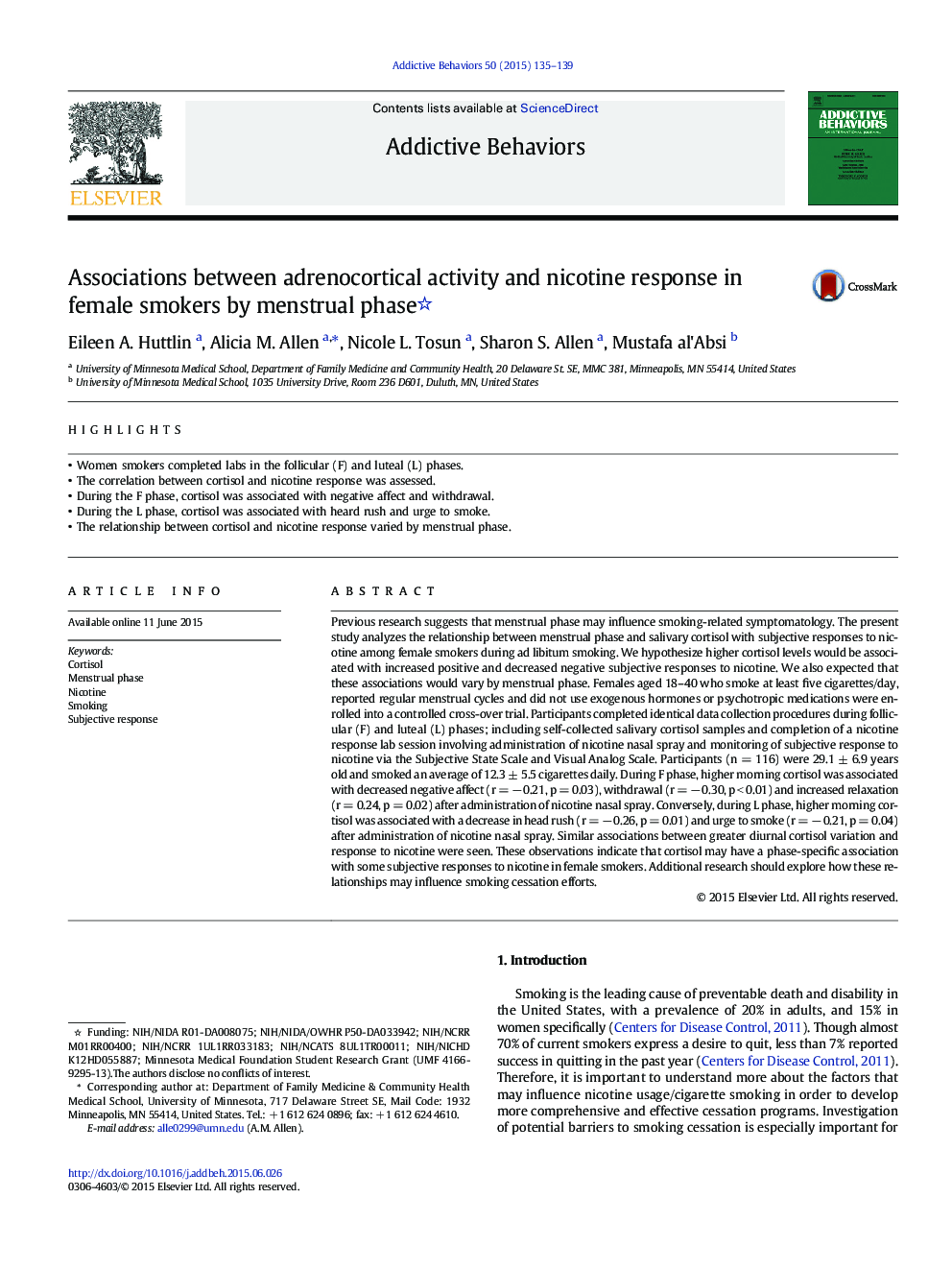| کد مقاله | کد نشریه | سال انتشار | مقاله انگلیسی | نسخه تمام متن |
|---|---|---|---|---|
| 898644 | 1472521 | 2015 | 5 صفحه PDF | دانلود رایگان |
• Women smokers completed labs in the follicular (F) and luteal (L) phases.
• The correlation between cortisol and nicotine response was assessed.
• During the F phase, cortisol was associated with negative affect and withdrawal.
• During the L phase, cortisol was associated with heard rush and urge to smoke.
• The relationship between cortisol and nicotine response varied by menstrual phase.
Previous research suggests that menstrual phase may influence smoking-related symptomatology. The present study analyzes the relationship between menstrual phase and salivary cortisol with subjective responses to nicotine among female smokers during ad libitum smoking. We hypothesize higher cortisol levels would be associated with increased positive and decreased negative subjective responses to nicotine. We also expected that these associations would vary by menstrual phase. Females aged 18–40 who smoke at least five cigarettes/day, reported regular menstrual cycles and did not use exogenous hormones or psychotropic medications were enrolled into a controlled cross-over trial. Participants completed identical data collection procedures during follicular (F) and luteal (L) phases; including self-collected salivary cortisol samples and completion of a nicotine response lab session involving administration of nicotine nasal spray and monitoring of subjective response to nicotine via the Subjective State Scale and Visual Analog Scale. Participants (n = 116) were 29.1 ± 6.9 years old and smoked an average of 12.3 ± 5.5 cigarettes daily. During F phase, higher morning cortisol was associated with decreased negative affect (r = − 0.21, p = 0.03), withdrawal (r = − 0.30, p < 0.01) and increased relaxation (r = 0.24, p = 0.02) after administration of nicotine nasal spray. Conversely, during L phase, higher morning cortisol was associated with a decrease in head rush (r = − 0.26, p = 0.01) and urge to smoke (r = − 0.21, p = 0.04) after administration of nicotine nasal spray. Similar associations between greater diurnal cortisol variation and response to nicotine were seen. These observations indicate that cortisol may have a phase-specific association with some subjective responses to nicotine in female smokers. Additional research should explore how these relationships may influence smoking cessation efforts.
Journal: Addictive Behaviors - Volume 50, November 2015, Pages 135–139
